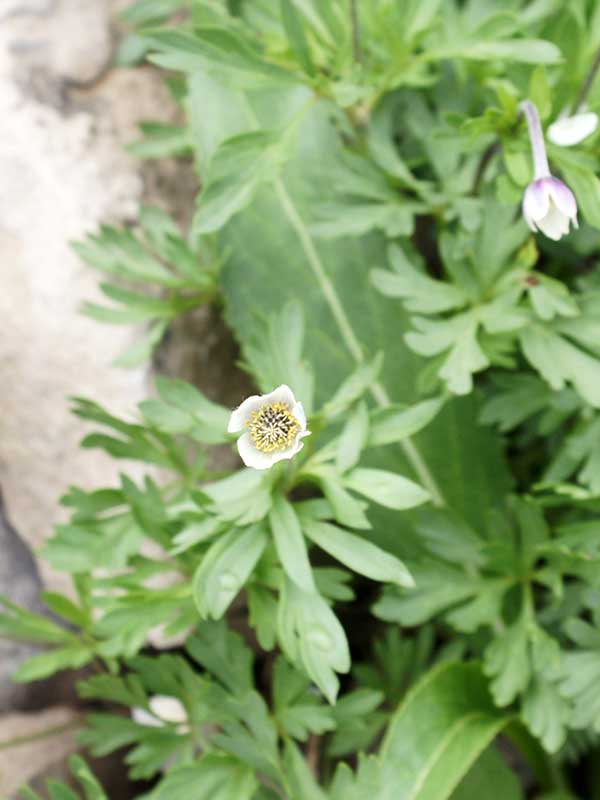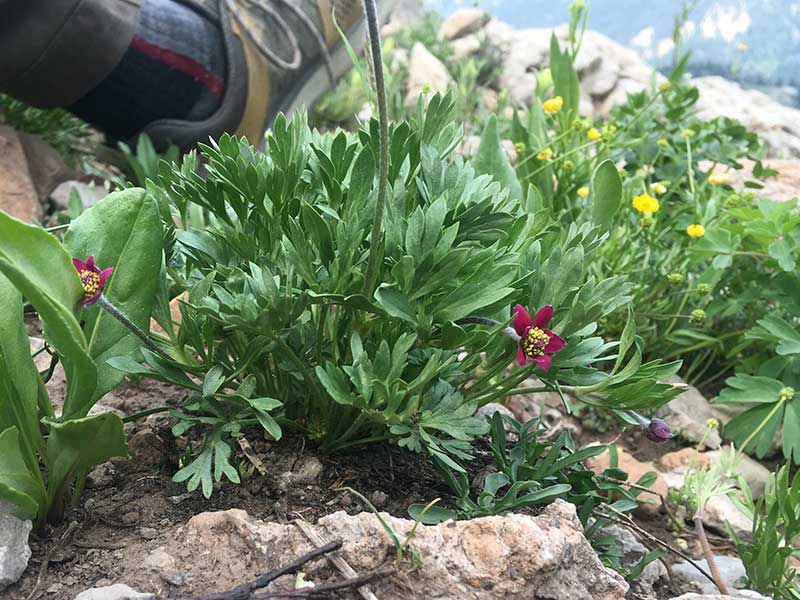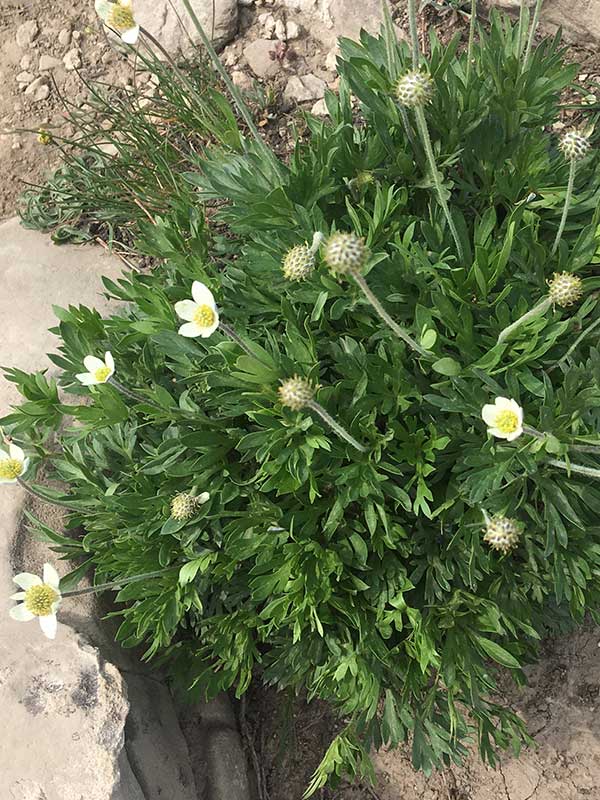Anemone multifida / cutleaf windflower
- usually 5 bi-colored “petals” – esp. pink or white; many stamens
- leaves deeply cut and re-cut in 3s with rounded or pointed tips
- stems and lower leaf surfaces usually hairy
- gone to seed, fruits have a troll-doll look
- on calcareous ledges, in shallow crevices or rocky outcrops; dry mountain tops or near water
Also known as: cutleaf anemone, Pacific anemone, globe anemone, red windflower
Cutleaf windflower, or just “anemone”, is a perennial herb which is quite variable in appearance. Last year’s dried leaves and stalks can be seen at the base of the new growth, meaning if you are lucky enough to find this plant, it will be in the same place next year, and you’ll be able to find it earlier. If you go high in the spring, before flowering starts, the leaves are quite recognizable. But mostly, if you’re here, you’ve found the flowers and have already fallen in love.
Each windflower plant will hold up to 7 long, slightly hairy stalks, each with a single flower. These actually have no petals. Rather they have four to eight (usually five) petal-like sepals. These may be nearly any color but typically white with pinkish bases, especially on the outside surface. Well, that depends on where you look; some sources say they are typically pink. Or, both can be found growing side by side. Bicolored sepals are usual. Two of these from the top of Fred’s Mountain are shown as the main image in the gallery.
The flower petals – OK, the sepals – are somewhat hairy, especially on the outer surface. The centers of the flowers contains up to 80 stamens. Overall, the flowers are less than 2″ across.
One of the photos in the gallery shows the developing fruits. These are massed in tight, globe-shaped heads. The individual fruits are achenes, woolly with long hairs, beaked, and a few millimeters long. This gives them the “troll doll” look also seen in plants like prairie smoke or hairy clematis. Troll doll or not, they inspire interesting descriptions, for example, “Seed pods are cute, curious, even humorous works of art and when they fully ripen their heads are a mass of funny fluff.” – from the Southwest Colorado Wildflower site.
On to the leaves. As in many species, the basal leaves and stem leaves are somewhat different. Most of the leaves are basal. Basal leaves are deeply cut into three parts, each part being cut again. The final division of each leaf has pointed-to-rounded tips. The lower leaf surfaces are sparsely covered by long white hairs while the upper surfaces are mostly hairless. Stem leaves are smaller and less divided. They are sessile, i.e. without petioles, and form a whorl a little way below the flowers.
Anemone multifida is to be found, at least usually, on calcareous ledges (high pH), in shallow crevices and in areas with rocky outcrops or gravelly soils. Although it is found on dry mountain tops, it also grows around lakes and other water ways. It is typically found in subarctic and boreal zones, e.g. on the way to Green Lakes or atop Fred’s Mountain. It is, however, not especially fussed by altitude and can occur from sea level to 13,500 feet.
Interesting bits – The word “Anemone” apparently derives from ‘Na’man’, the Semitic name for Adonis. The crimson-flowered species in the Middle East supposedly sprang from his blood. It’s a cool story, as mythical romances go, and the wikipedia version is here. The name likely has nothing to do with the Greek word, “anemos” which means wind. Multifida is Latin for “many divisions”, referring to the leaves.
Finally, cutleaf windflower is poisonous due to its high ranunculin content: about 8.1% in aerial parts and 4% in root per dry weight.
| Color | |
|---|---|
| Family | |
| Blossom size | |
| Inflorescence size | |
| Inflorescence type | |
| When? | |
| Where? |






